It’s safe to say that ever since ChatGPT was launched in November 2022, the world has changed.
AI is infiltrating nearly every industry and is contributing to the rapid evolution of existing technology.
Using AI-generation tools like ChatGPT to produce text has been a popular way to harness its power.
Whether you are a freelance writer, content creator, or even an academic student, AI has been a powerful tool to add to your arsenal.
Enter AI detectors to spoil the party. We’re joking of course, there does need to be a check in place to ensure that AI is used responsibly and with good intentions.
Site owners, schools, and even Google itself utilize AI detectors to ensure we are not passing that work off as our own.
But can AI detectors be wrong? It should come as no surprise that AI technology on both sides of the aisle is still imperfect.
These detector tools routinely suffer from false positive tests. Here’s how you can learn to bypass AI detectors and avoid the hassle of false positives.
How Do AI Detectors Work?
AI detectors are built using natural language models and millions of data points of both AI and human-generated text.
Whenever content is screened by an AI detector tool it compares it against these data sets and seeks out predictable patterns in syntax, word choice, and the overall structure of the text.
These detectors are trained to recognize patterns and compare them to both AI and human-generated examples.


Never Worry About AI Detecting Your Texts Again. Undetectable AI Can Help You:
- Make your AI assisted writing appear human-like.
- Bypass all major AI detection tools with just one click.
- Use AI safely and confidently in school and work.
The findings of the AI detector are the likelihood that the scanned content is AI-generated, not a guarantee. AI detectors work on the basis of probability without any definitive evidence.
What exactly are these patterns that AI detectors are looking for? Two concepts that are driving forces for AI detectors are what are known as burstiness and perplexity.
Burstiness refers to the length and complexity of sentences. If you’ve ever read AI-generated text, it will sound mechanical.
This is because many of the sentences have similar length, structure, and even punctuation.
Perplexity refers to how complex the language is as its name suggests, and how easily human readers will be perplexed.
For comparison, AI-generated text is pre-programmed to have a low perplexity to make things easier for readers to understand.
Most detectors use machine learning algorithms trained on datasets containing both human and AI-generated text.
They learn to identify subtle markers that supposedly distinguish artificial content from authentic writing.
The problem? These markers aren’t foolproof. Human writing can sometimes match AI patterns perfectly. Especially if you’re a clear, concise writer who follows standard grammar rules.
Some detectors also use reverse engineering techniques.
They try to predict what an AI model would generate given the same prompt. If your text matches those predictions too closely, you get flagged.
But prediction isn’t reality. Just because an AI might write something similar doesn’t mean it actually did.
Try our AI Detector to see if your text will pass detectors!
Can AI Detectors be Wrong?
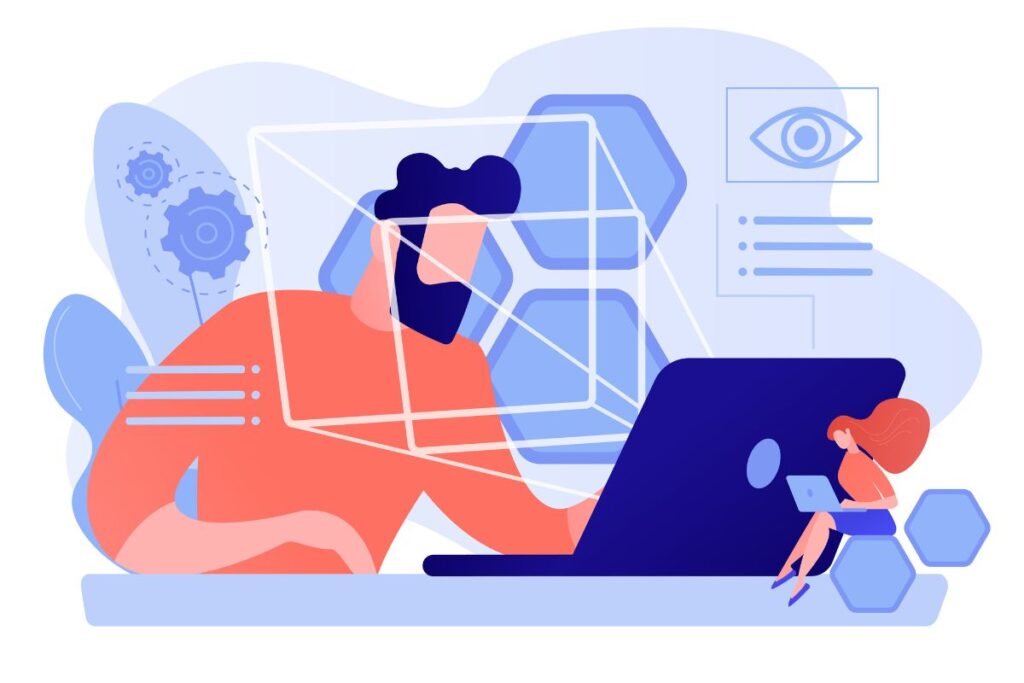
Yes, and more often than you might think too. Those who have both used AI detectors and had their content scanned by an AI detector, know that these tools are far from perfect.
Even a small percentage of erroneous scans can lead to false accusations against students or writers.
Remember that AI detectors can only scan for recognizable patterns in the text, as the technology is still evolving.
We’re essentially using imperfect tools to detect other imperfect tools. It’s like trying to catch a chameleon with another chameleon.
False positives happen when human-written content gets flagged as AI-generated.
False negatives occur when AI content slips through undetected. Both scenarios create serious problems for anyone relying on these tools for important decisions.
What is an AI Detection False Positive?
A false positive is defined as a positive result that is recorded even when it isn’t the true result.
This can apply to science experiments and even medical tests for illnesses.
An AI detection false positive happens when the AI detector scans the content and alleges that it was written by AI even though it was written by a human.
You can imagine how problematic this can be when it comes to things like academic integrity and employment for freelance writers.
Turnitin is an online program that many Universities around the world use to allow students to submit coursework digitally.
This site now has an AI detector available for teachers to use, and it claims an accuracy rate of more than 98% with a lower than 1% rate of false positives.
Some users believe that the 98% rate is much lower than the reality.
An AI detection false positive can lead to discipline from schools, employers, and Google itself when it comes to SEO ranking.
This reality is settling in and some companies and schools, like Vanderbilt University, are disabling the AI detector on Turnitin.
AI Writing Traces Humanity
Here’s something most people don’t realize: AI writing actually contains traces of human creativity. Every AI model was trained on human-generated content.
In a way, AI writing is just remixed human thought.
That creates a fundamental problem for detection systems. Where does human writing end and AI writing begin? The line isn’t as clear as we’d like to think.
When you use similar phrasing to millions of other writers, are you copying them or just thinking similarly? When an AI uses that same phrasing, is it copying or generating something new?
The overlap between human and AI writing styles creates a gray zone where detection becomes nearly impossible. Good human writing and sophisticated AI output can be virtually indistinguishable.
AI models are designed to produce human-like text. The better they get at this task, the harder they become to detect.
Main Reasons for False Positives in AI Detection
So what causes these AI detectors to provide false positives?
There are a number of reasons why your content might be flagged.
The AI detector itself does not realize it is providing you with a false positive report. There is either an issue with the training of the detector itself or your content.
Here are a few reasons why false positives happen so often in AI detection.
Changing AI Models and Algorithms
At the heart of AI detectors and most AI software for that matter, is how well they are trained.
With ever-evolving models and increasingly complex algorithms, AI detectors can be caught with old technology and out-of-date data sets.
More complex data sets and robust training might better equip AI detectors to eliminate false positives. But this will both raise the cost and computational capacity of these programs.
Bias Toward Non-Native English Speakers
AI detectors have a strong tendency to flag non-native Engish writing as AI-generated.
A research study by Stanford suggests that most AI detectors have a bias against non-native English speakers.
Why? It’s not racism, it’s because most non-native English speakers score a low mark in perplexity. As in, their sentences and prose are generally very simple and easy to understand.
Limited Understanding
AI detectors don’t actually understand what you’re writing about.
They’re looking at surface-level patterns without grasping meaning or context.
This creates blind spots. A detector might flag a technical manual as AI-generated because it uses consistent terminology. Or mark a legal document as artificial because it follows standard formatting.
Creative writing faces unique challenges.
Experimental styles, stream-of-consciousness passages, or unusual narrative techniques can confuse detectors, as they expect writing to follow predictable patterns.
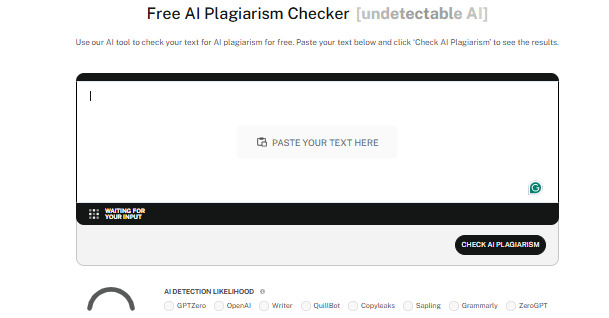
Speaking of detection tools, Undetectable AI’s AI Plagiarism Checker takes a different approach.
Instead of just flagging content, it provides a detailed analysis of why certain passages might trigger detection so writers understand the specific elements that cause problems.
What to Do if Your Human-Written Text Is Flagged as AI
Getting falsely accused of using AI can be devastating. But don’t panic.
Here’s exactly what to do when your authentic work gets flagged:
Step 1. Review the Flagged Text: Read through the text you submitted. Look for anything that might seem too formal or too consistent.
Even human writing can get flagged if it sounds too perfect.
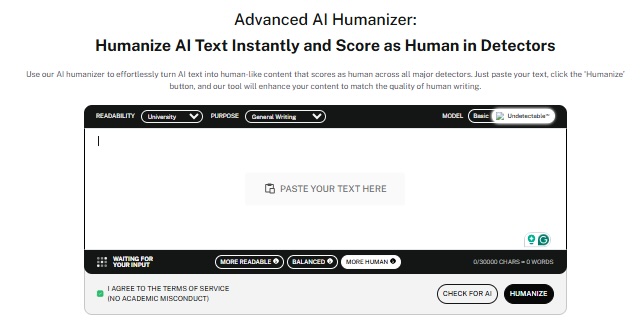
Step 2. Paste into Undetectable AI Humanizer: Copy the entire flagged text and paste it into the Undetectable AI Humanizer tool.
The tool helps adjust sentence structure, tone, and word choices to align more with natural human writing.
Step 3. Choose Your Humanizing Level: Depending on how much you want to change, select the level of humanization you want: low, medium, or high.
It’s best to start with a medium setting to maintain your original meaning.
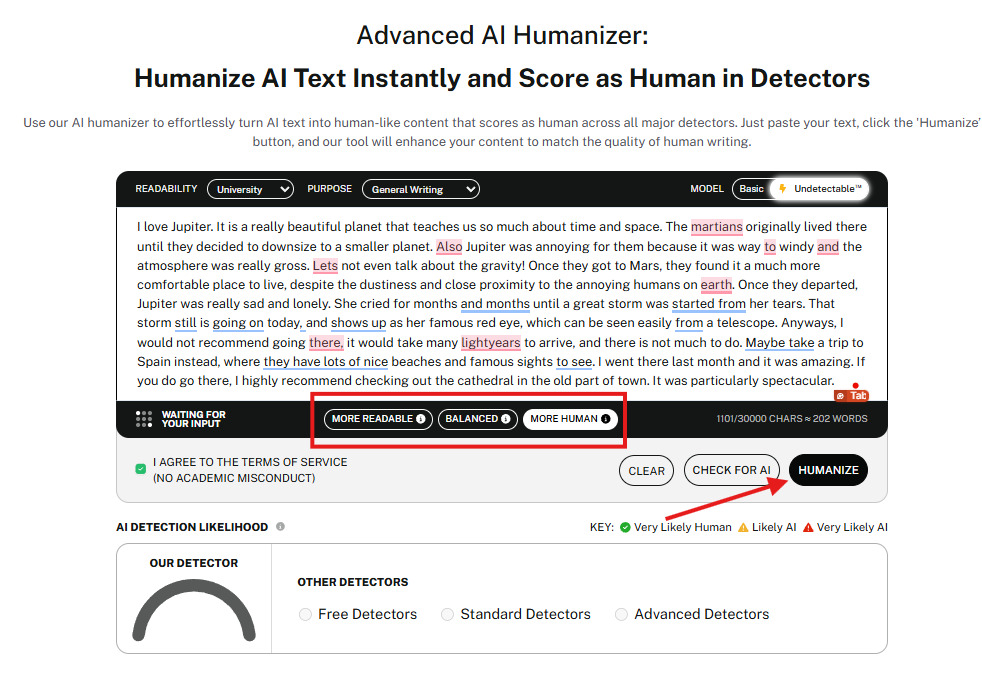
Step 4. Generate and Review: Click “Humanize” and let the tool work its magic. Once done, read through the humanized text to make sure it still reflects your voice and message.
Step 5. Submit or Publish with Confidence: With your text now adjusted, you can confidently submit it to any platform, knowing it reads more authentically human.
Top 3 Tips to Avoid AI Detection
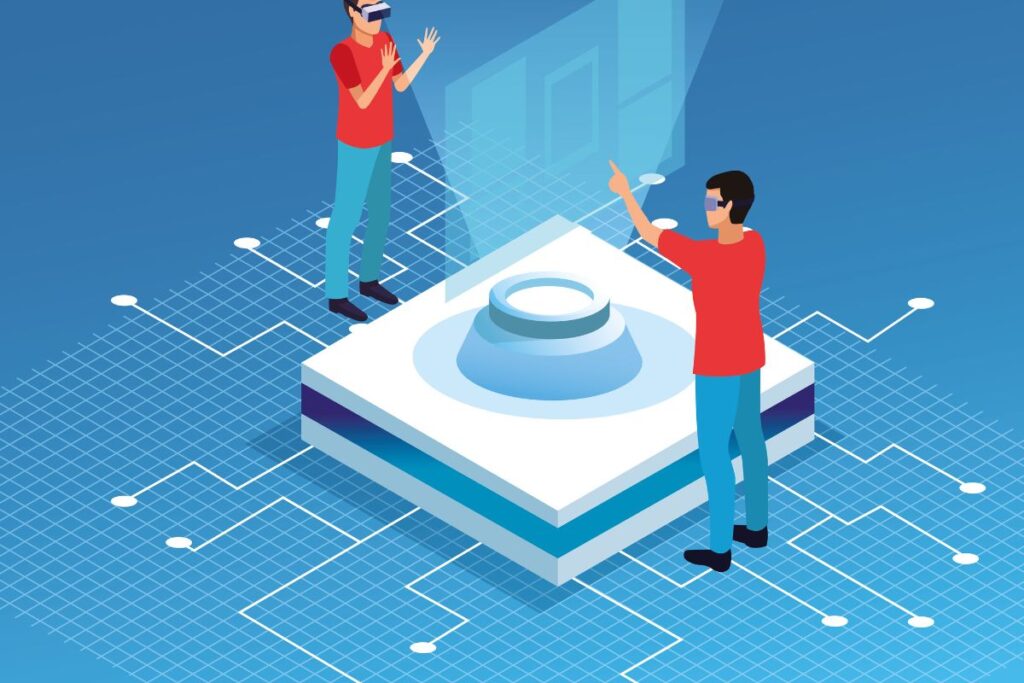
Audiences and search engines are getting smarter, and that means they can tell when something feels off, much like when we see an AI image with six fingers.
There are things you can do before you submit your work to mitigate the risks of being flagged as written by AI.
1. Use Undetectable AI
The best defense against false positives is knowing what triggers them. Undetectable AI’s platform includes both an AI Humanizer and AI Detector that work together seamlessly.
The AI Detector shows you exactly which parts of your writing might cause problems.
Then the AI Humanizer helps you adjust those sections without changing your core message.
Using these tools isn’t about cheating or hiding AI use but about making sure your human writing doesn’t get misidentified.
The platform’s strength lies in its comprehensive approach. Instead of just telling you there’s a problem, it shows you exactly where and why, then helps you fix it.
2. Add Your Unique Tone and Voice
Generic writing triggers detectors more often than distinctive writing. Develop your personal style and lean into it.
Use specific examples from your own experience. Reference personal anecdotes. Include cultural references that matter to you.
Vary your sentence structures more than you think you need to. Mix short, punchy sentences with longer, flowing ones. Break some grammar rules intentionally for effect.
Add personality quirks to your writing. Maybe you love semicolons. Maybe you start sentences with “And” or “But” sometimes. These human touches help authenticate your work.
Don’t be afraid to be imperfect. Real human writing has small inconsistencies and minor flaws. Overly polished prose can actually trigger detection systems.
3. Scan Your Final Work for AI Detection
Always test your writing before submitting it.
This should be part of your standard editing process, like checking spelling and grammar.
Use multiple detection tools to get a broader picture. What one detector misses, another might catch.
Undetectable AI’s tools make this process simple.
Their detector provides detailed feedback about potential problem areas. You can fix issues before they become problems.
Pay special attention to technical sections, introductions, and conclusions. These areas commonly trigger false positives because they follow predictable patterns.
FAQs
Are AI detectors accurate?
AI detector accuracy varies significantly between tools and content types. False positive rates can be particularly high for non-native English speakers and technical writing.
What do AI detection scores mean?
Detection scores typically show the probability that content was AI-generated, usually as a percentage. A 70% AI score means the detector thinks there’s a 70% chance the content is artificial.
However, these scores aren’t definitive proof. They’re statistical estimates based on pattern recognition.
Why do AI detectors say my writing is AI?
Common reasons include: consistent sentence structure, formal tone, technical subject matter, non-native English patterns, or writing that follows predictable formats. Sometimes human writing naturally matches patterns that detectors associate with AI output.
Do AI detectors work on all languages?
Most AI detectors work best on English content since that’s what they’re primarily trained on. Performance drops significantly for other languages, and false positive rates tend to be higher for non-English text.
Navigating AI Detectors Without Losing Your Mind
So, can AI detectors be wrong? Of course. Are AI detectors flawed? Absolutely.
Do AI detectors work? Most of the time they do.
It’s not uncommon for people to only think in dualities but an AI detector can both be flawed and serve its purpose.
When an AI detector is used properly it can provide a defense against the unethical usage of AI for academia and content creation.
But when AI begins to provide false positives and inaccurately flag text as AI-written, then we have a problem.
We have to remember how early we still are on the generative AI roadmap. The technology we have now will look ancient in five or ten years.
As AI technology continues to improve, so too will the accuracy of AI detectors.
Until then, we will have to learn to deal with the fact that these detectors are far from perfect and that the results and AI detection score should never be used as definitive evidence of cheating or academic dishonesty.
If you want to make sure your human-written content stays authentic and undetected, try Undetectable AI’s Humanizer tool today.
Keep your voice intact, your writing authentic, and your creativity unstoppable.
Start humanizing your text with Undetectable AI now.
